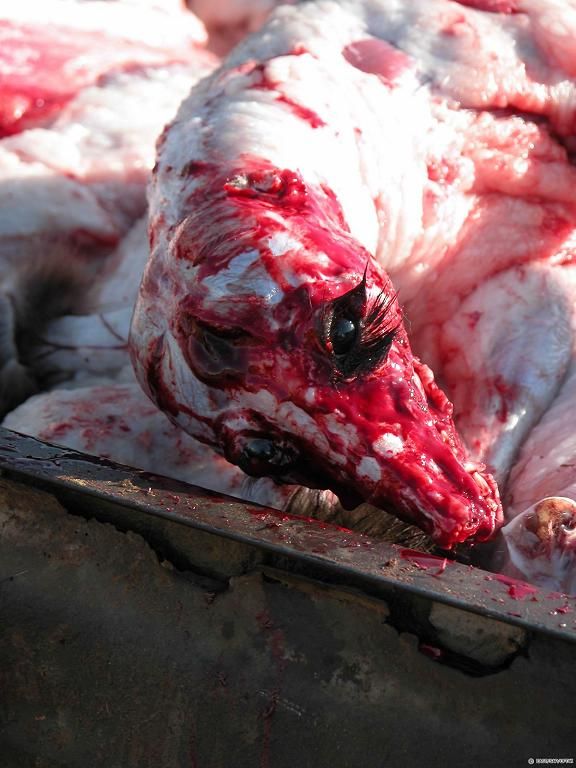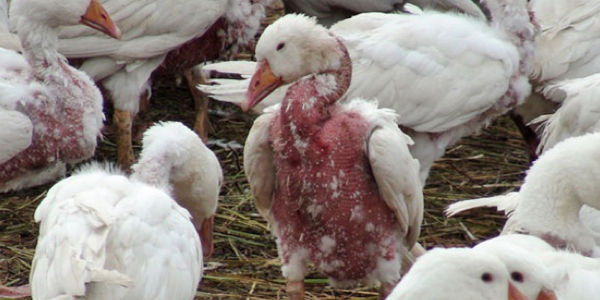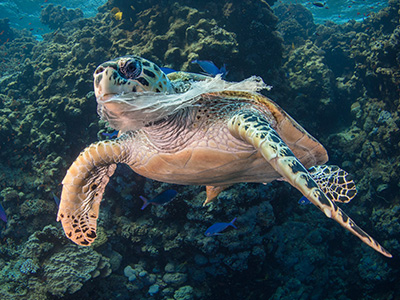![]()
Warning: This article includes pictures that may be considered graphic/disturbing. If you find any of the below images hard to look at, perhaps you should ask yourself if you’re really okay with continuing to fund the cruel practices that result in the below images.
Yep, it’s true – we humans put animal pieces/bits/by-products in all kinds of things that have nothing to do with food!
If you’re shocked, well don’t feel too bad – it’s not exactly like companies put ‘insect exoskeleton’ or ‘sheep fat’ on the label. They disguise these animal by-products by giving them a different name, so that they can sneak them under the radar.
This is why veganism is so much more than a diet, it truly is a lifestyle change. If you’re committed to reducing your harm to animals, then read through the list below to discover some of the most common animal by-products that are hiding in non-food items.
Unfortunately, the way society is, it’s literally impossible to be 100% animal product free, that’s why there’s no such thing as a truly 100% vegan – it’s just impossible in today’s world. While it can get overwhelming to see just how many everyday things have animal products in them, I don’t want you to freak out – take things slowly. It can be overwhelming, but don’t fret if you’re unable to cut out using all of the things listed below, it’s not feasible for everyone, and that’s okay. As long as you’re aware, and are consciously trying to reduce your harm, you’re doing enough. So try not beat yourself up too bad.
Alright, let’s start with the most obvious:
Leather
If you didn’t know, leather is cow skin. (Or snake, alligator, buffalo, sheep and more) Yep, you read that right, leather products are literally skinned animal. Do you really want to walk around like Michael Myers? (Why do you think his nickname is Leatherface?)

Suede
Pretty much the same as leather, (made out of animal skin), but suede is ‘fuzzy’. Either way, you’re wearing dead animal.
Fur
Fur can be in many things, including: coats, boots, blankets, etc. If it’s not faux, the fur once belonged to an animal, usually mink, foxes, and raccoon dogs. These poor animals are often de-furred alive, often without the use of anaesthetic, or pain pills. Is it really worth torturing an animal and taking its’ only defence against the cold, when we as humans have so many other options?

This animal was still alive at the time this picture was taken. If you can’t even look at the above image, or find it disturbing, you shouldn’t be wearing fur. Help prevent the above from happening by shopping for faux, or find other alternatives.
Wool
Where do we get wool from? Sheep. We shear the wool off the sheep to use for sweaters, blankets, socks, etc. What’s wrong with wool? Well:
- Shearing: Let’s start with the practice everyone knows about. Farmers shear sheep to get their wool. But, often shearing is painful for sheep, and is much more than just a haircut. But wait, don’t sheep need to be sheared? Well, no, not at all. Undomesticated sheep only produce the amount of wool they need to survive, which truthfully isn’t that much. Same as we have genetically bred chickens to be too fat for their legs, humans have genetically modified sheep to overproduce wool that now requires the support of the shearing industry. Their bodies have a hard time supporting the weight, and some risk suffocation because they can’t breathe.

(Those marks are scars from old cuts, not ribs/bone)
Why are they bred to produce so much wool? Because most shearers are paid per sheep, not an hourly wage. Meaning they need to get the most amount of wool possible from a sheep in a quicker time frame. This also results in carelessness by shearers, and sheep often get injured from the quick paced shearing. Anything from nicks, to amputation of their udders, ears and other body parts can happen.
- In Australia (where about half the world’s wool comes from) farmers often practice ‘mulesing’ which is a terribly cruel procedure in which farmers use tools resembling garden shears and carve chunks of skin/flesh from lambs’ backsides in an attempt to prevent a parasitic disease called ‘flystrike’. This practice is commonly performed without painkillers. And why does this happen? Because we’ve bred them to produce as much wool as possible, a sheep’s’ skin has wrinkled, and this wrinkled skin accrues excess moisture, which attracts flies. These flies lay eggs in the folds of the skin, resulting in maggots consuming the sheep’s’ skin.

- What happens once the sheep begin to produce less wool? They get shipped off to a slaughterhouse and sold for meat, just like cows, pigs and other animals. Many are killed by having their throats’ slit while still conscious.
Silk
Silk comes from worms. (Or spiders) Yes, they count as animals. (If bees count, so do worms)
You may be wondering: Why does it matter if we take their silk?
Silk is the fiber that silkworms make to make their cocoons. (Similar to a caterpillar) For humans to get the silk, manufacturers’/collectors boil the worms alive while they’re in the cocoon. This prevents the worms from transforming to the next stage of their life cycle (the pupal phase), where they make a hole in the cocoon by releasing enzymes, which often cause the silk fibers of the cocoon to break down, and thus make them unviable for harvesting. Boiling the cocoon not only kills the worm by boiling it alive, but also makes the cocoons easier to unravel. Often times, after being boiled, the worms themselves are eaten as well.
Roughly 10 billion cocoons are required to produce the 70 million pounds of raw silk that are needed yearly.
Down
Down is the under-feathers from geese, ducks and other birds. Down is used most often for pillows, winter coats, and comforters. The feathers used for down are often taken via live-plucking. (I.e., the bird isn’t dead when the feathers are taken) You know the feeling of needing to tweeze/accidentally getting an arm hair ripped out? Imagine that pain ten fold, all over your body.

Beeswax
For those who don’t know, beeswax is a natural wax that honey bees produce. It’s formed by the bees into ‘scales’ by eight wax-producing glands in their abdomen. They then ‘discard’ the wax in or at the hive.
To put it in laymen’s terms, beeswax is essentially bee poop.
It would probably be faster to list products that don’t have beeswax, so to save time, I’ll just list a few examples:
- Natural food wraps
- Candles
- Shoe/furniture polish
- Surfboard Wax
- Cutler’s Resin (a glue used in the handles of cutlery knives)
- Tambourines (often used by percussionists on the surface for ‘thumb rolls’)
- Oil/Body Paint
- Soaps
- Lip balm/gloss
- Egg decoration (such as Easter egg crayons, dye, etc.)
- Cream/lotion/moisturizers
- Make-up (eye shadow, blush, eye-liner, etc.)
- Moustache wax/hair pomades
It is even an ingredient in surgical bone wax, which is used during surgery to control bleeding from bone surfaces.
As you can see, beeswax is in many different products, and isn’t specific to one group of them. This isn’t saying that all of the variations of these products contain beeswax, just that it’s most likely an ingredient. Always read the label on every product to ensure you know what’s in that particular item.
Now, onto the less obvious animal by-product names:
Carmine
Carmine or Red #40 (or Allura Red AC) is the fancy name they decided to give red food colouring/red dye, perhaps because if they called it what it actually is, crushed cochineal beetles, nobody would buy the products.
Speaking of food dyes:
- Blue #1 (Brilliant Blue FCF)
- Blue #2 (Idigotine)
- Green #3 (Fast Green FCF)
- Red #3 (Erythrosine)
- Yellow #5 (Tartrazine)
- Yellow #6 (Sunset Yellow FCF)
All 6 of the dyes listed above are tested on animals. These food dyes are not only used in foods, however – since they’re food-grade safe, they’re often also used in soaps, bath bombs, creams/lotions, and more. Pretty much if a non-food item is dyed a certain colour (and the label doesn’t specifically say it’s vegan), chances are good you’ll find one of the above listed in the ingredients.
If you can’t tell or aren’t sure? Call or e-mail the company to get your answer. In my experience, if a company doesn’t use one of the above, you’ll get a speedy, in-depth reply explaining what they use instead. If they do use one of the above (or other animal ingredients) chances are good they’ll take a while to reply, if at all. If you can’t find the info for the ingredients used on the website, chances are good they’re using an animal-derivative.
My rule since going vegan: if they’re hiding it, they probably shouldn’t be doing it. If I ask a company, and they don’t get back to me, I assume it’s not safe and try to find an alternative.
Bone Char
Exactly what it sounds like, the charred/ash remains of animal bones. This stuff is used mainly in the processing of sugar. This is why Oreos (and many other things) aren’t technically vegan in the US, because the sugar used is made with bone char. In Canada, our sugar isn’t processed this way, so Oreos, and other products are vegan. (Check the processing for your own country, as it can vary)
Bone char can also be found in plastic bags.
Tallow
Tallow is a rendered for of animal fat, usually from cattle. Tallow and its’ derivatives can be found in all kinds of non-food items, such as: fabric softener, eye makeup, lipsticks, foundations, shampoos, moisturizers, and other skin care products.
Castoreum
Does your perfume like vanilla? Then it might contain castoreum, which comes from a beavers’ castor sac – which is a gland between its’ pelvis and the base of it’s tail.
Yep, your sweet, vanilla scented perfumes, lotions and/or candles have the aroma from a beavers’ ass.
Polymers
Not all polymers are non-vegan. The polymers used specifically in plastic bags as a ‘slip agent’ (used to reduce friction) is made from animal fats. Companies like Tyson Foods are reportedly experimenting with keratin protein (found in chicken feathers) to be used in new plastic bags, adhesives and non-woven materials.
As if using the remains of animals isn’t bad enough, using plastic bags is also contributing to the destruction of the ocean. Birds and sea turtles often mistake shredded bags for food, and by ingesting these products their stomachs are filled with toxic debris.
It’s also estimated that only about 1% of plastic bags are recycled. This means that for an average family, only 1 in 15 bags are recycled. Couple this with the fact the average amount of plastic bags used a year in Canada is 3 billion (100 billion in the US), and the fact it takes roughly 400 years for plastic bags to break down, you can hopefully start to see the problem.

Also, while we’re on the subject, just a quick note: most of the pollution found in the ocean is from the fishing industry, specifically, fishing nets.
Stearic Acid
Again, not all stearic acid is made from animals. Animal-derived stearic acid is made out of animal fats. This non-vegan stearic acid can be found in many things, but the biggest/most common seems to be tires for bikes, cars, etc. In tires, it’s used to help the rubber hold the shape under friction.
Another uncommon thing animal-derived stearic acid is found in? Fireworks! (This genuinely surprised me.)
It’s used to coat metal powder and is used to prevent oxidation, which allows the fireworks to be stored for longer periods of time.
Glycerin
Just like with polymers and stearic acid, glycerine can come from either animal or vegetable fats.
Glycerin is found in many different products, including:
- Soaps
- Shampoo and conditioners
- Toothpaste
- Mouthwash
- Ointments
- Cough syrups
- Perfumes
- Lotions
- Shaving cream
- Inks
- Glues
- Anti-freeze and brake fluid
Unless the label on a product specifically lists ‘vegetable glycerin’, it’s best to ask the company, or stay away all together (if that’s an option) if you can’t get a clear idea of the type.
Chitin
As explained in my Vegan Sunscreen post, chitin comes from the exoskeletons of crustaceans, insects and arachnids. Protecting yourself from the sun by rubbing a dead spider on you? No thank-you!
Elastin
Elastin is a type of protein, found in the artery walls, intestines, lungs and skin of animals. Elastin is most often found in anti-aging products and sunscreens.
Animal Glue
Used most often in shoes, handbags and is even sometimes used for fixing wood instruments, ‘animal glue’ is made by boiling animals’ connective tissue or bones.
It’s apparently the ‘best’ for fixing musical instruments made out of wood, like violins or pianos. It’s also one of the most readily available and widely used glue.
I unfortunately could keep going with this list, but in the interest of not making this article too long, I’ll be ending it here. As you can see, there are many different animal-derived ingredients that can be found in non-food items. This is unfortunate for people who are trying their best to avoid exploiting/using animals, but as said at the beginning of this article, it’s impossible in society today to be 100% vegan.
Another thing to keep in mind, is this list is only talking about non-food products that contain animal ingredients – this isn’t even counting the massive amounts of products that are tested on animals, such as: shampoos, lotions/creams, sunscreens, makeup and more.
And, (just to make things more confusing) cruelty-free does not mean a product is vegan. The difference is, cruelty free means the product just isn’t tested on animals – it says absolutely nothing about the ingredients. There can be products out there that are cruelty-free but not vegan. But, on the flip-side, if a product is vegan, that means it’s cruelty free.
Cruelty-free \= vegan (Cruelty Free does not equal vegan)
Vegan = cruelty-free (Vegan always equals cruelty free)
This is why it’s important to read the ingredients and the label of each product. I always do my best to creep the company’s website to see if I can dig up the answers to my questions, (fortunately many companies are now making things like ‘cruelty-free’ and ‘vegan’ selling points for products) but if you can’t find the information you need on the website, always, always be sure to e-mail or call the company. If you ask them directly, they’ll most likely give you an answer (or might give you a generic ‘check out our FAQ page!’).
If you still can’t find the answers you’re looking for, I usually will end up not buying the product, or looking for a vegan company substitute instead. Another thing I’ve recently started doing is to make my own products if I can’t find an alternative.
While the above is nowhere near an exhaustive list, I hope this article has helped you realize that there are animal products in many different non-food items. I also hope that the information in this article will help you be more mindful of what’s in the products you’re buying, and will hopefully allow you to make a more informed, kind choice with the products you buy.
Like this article? Check out more vegan tips here!
Liking the site? Consider signing up for my Patreon, so I can continue bringing you the content you love!
Sources:
Food Colouring Article: http://www.yourdailyvegan.com/2011/10/warning-what-you-dont-know-about-food-colors/
Raccoon Dog Picture taken from: peta2TV Youtube channel, ‘Olivia Munn Exposes Fur Farms!’ video: https://www.youtube.com/watch?v=Ab7L8NRRYho
Sheep Facts: https://gentleworld.org/whats-wrong-with-wool/
Tyson Foods plastic bags experiment:
https://www.treehugger.com/green-food/9-everyday-products-you-didnt-know-had-animal-ingredients.html
Stearic Acid Tires: same article as plastic bags (9 everyday products)
Plastic Bags used in Canada/400 years to break down: http://www.mondaq.com/canada/x/678924/Environmental+Law/Will+2018+be+the+Year+of+the+SingleUse+Plastics+Ban
Leather/Cow Being Skinned Photo: https://www.all-creatures.org/aip/nl-20130526-leather.html
Live/Plucked Photo: https://www.thepetitionsite.com/373/242/428/tell-outdoor-gear-companies-to-end-down-plucking-torture-of-live-geese/
Mulesing Photo: https://www.peta.org/issues/animals-used-for-clothing/wool-industry/mulesing/
Shearing Injury 1: https://www.petaindia.com/features/another-patagonia-approved-wool-producer-exposed-help-sheep-now/
Sea Turtle Eating Plastic Bag Photo: https://www.mcsuk.org/news/turtle-eats-plastic-bag
Silk Info: https://en.m.wikipedia.org/wiki/Bombyx_mori
Glycerin info: https://gentleworld.org/hidden-animal-fats/
